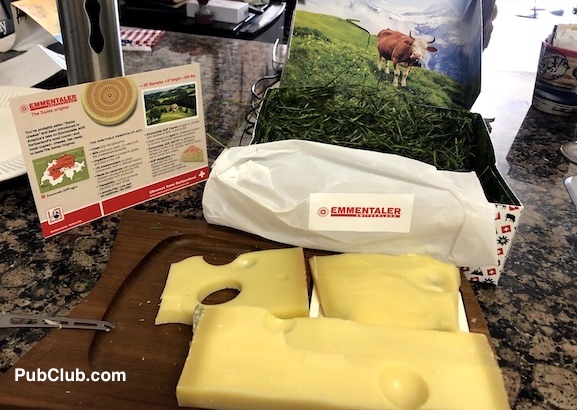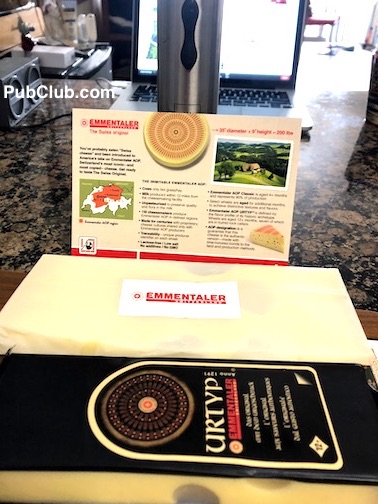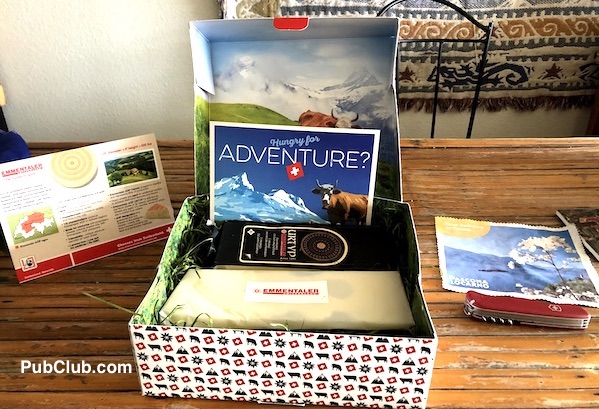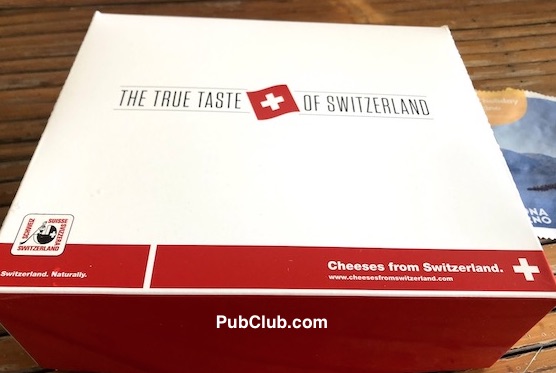Authentic Swiss Cheeses Emmentaler And Urtyp Provide A True Taste Of Switzerland

This cheese is so good it took me a week to write about it because I kept tasting it instead of blogging about it.
Then again, what else would one expect with cheeses from Switzerland?
I recall one one press trip, being presented a full table full of various Swiss cheeses, like a buffet dinner at a Las Vegas hotel. I had to stop myself from eating for fear of filling up just on cheese and not the dinner.
So when Tourism Switzerland informed me I would be getting a shipment of two cheeses for a live taste test on Zoom for travel bloggers, I was rubbing my hands in anticipation of the event. When they arrived two days before the tasting, I shoved them to the back of the refrigerator so I would not be tempting to rip into the packages and eat them all beforehand.
The cheeses were the Emmentaler and the Urtyp. The former is what you might think of as the widely-known Swiss cheese while the latter is a stronger, pungent flavor. Both have holes in them (more on how the cheeses get those holes later). The Emmentaler is widely available in the USA and Canada while the Urtyp might be found at some fine cheese shops. Look for an AOP label to get the authentic cheeses.



Both, however, are like the excellent Swiss wines in that some 90% are made for domestic consumption because they are not produced in huge factories but rather in small quantities. They come from a particular region of Switzerland, an area between and just south of Zurich and Bern and are made in 200-pound wheels that are the size of car tires.
The cows are fed grass and they and are aged four months for the Emmentaler and 12 months for the Urtyp in caves that must be located with a few miles of where the cows graze. They have been made this way since the 1200s.
As with all cheeses, to bring out their full flavor, it is best to let them thaw from the refrigerator for at least an hour before eating.
The thing that first caught my attention was the aroma. It’s not often you can smell cheese from an arm’s length distance but the minute I opened the packages my nose picked up a very pleasant fragrance.
Next was the super-smooth texture. I mean how many times does one note the texture of cheese? These were both as smooth as a PubClubette’s skin.
Then, of course, was the flavor. The Emmentaler is THE quintessential Swiss cheese and had a rich, true traditional taste. I could instantly detect the quality of the ingredients; that’s what really made it stand out above the standard Swiss cheese you get in the grocery store. The flavor was subtle but distinct. And do delicious, I could not stop eating it.
The Urtyp was more bold, like someone charging down a mountain while skiing in the Swiss Alps as opposed to one taking a more leisurely run.
“It’s travel in a bite,” said cheesemaker Roland Sahli, who joined the show from a cheese cave in Switzerland. “You can hear the cowbells when you eat it.”
The reason the cheeses have holes in it, by the way, is the gasses that get into the cheese during its maturation process. It has to do with the method of making the cheese at room temperatures and sometimes in addition to the holes the cheeses can also get cracks. Cheesemakers “thump” the cheeses with a small hammer to check for the gases.
A week later, I still have some left. After gorging on it during the show, I wanted to savor it, so I started being more conservative in consumption.
But I could be tempted to rip into it at any moment.
Cheers for cheese lovers!
Leave a Reply
You must be logged in to post a comment.